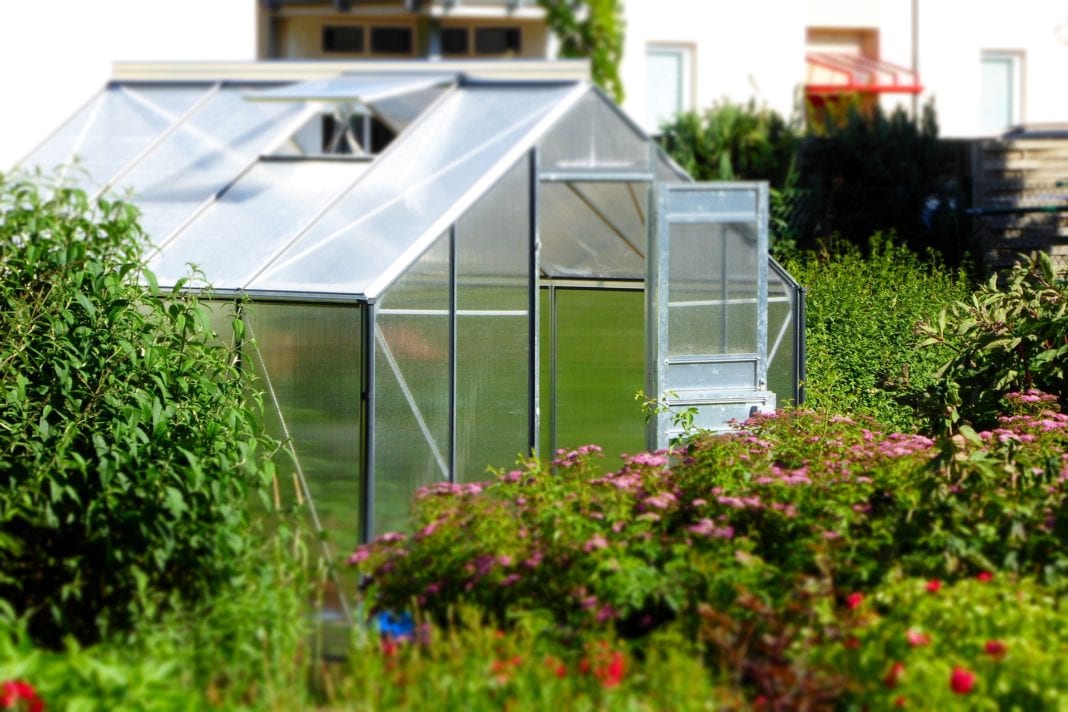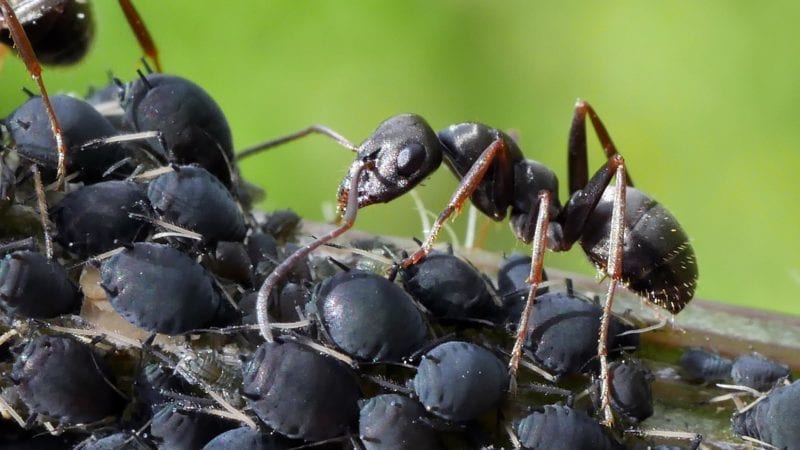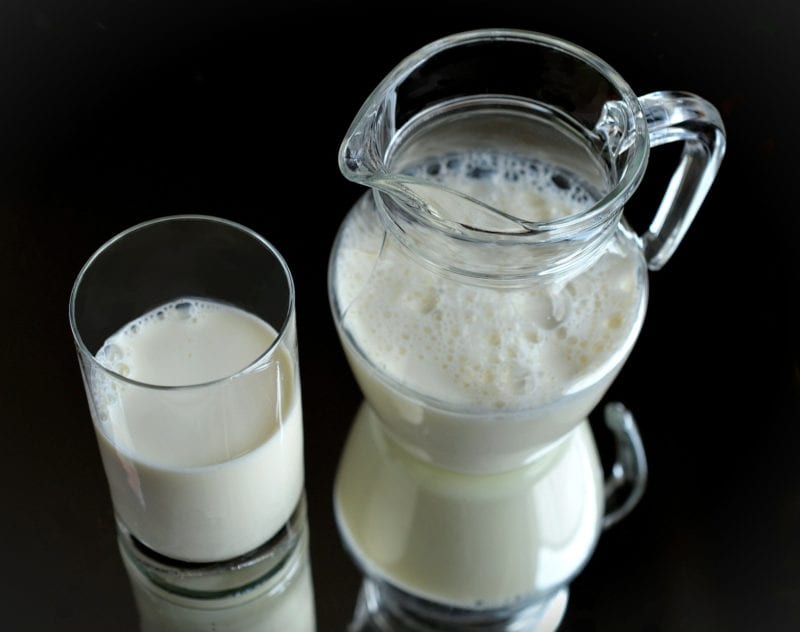
Aphids in the greenhouse you will find more often than you would like. The little pests not only settle in your garden or houseplants, but also find their way into the greenhouse.
The greenhouse provides ideal conditions for the aphid. The warmth and the large number of plants cause the pest to spread there in a very short time. If you discover the first damage to your plants, quick action is required.
Learn how to deal with aphids in the greenhouse and limit the damage in this guide.
Contents
- 1 How do you recognize aphids in the greenhouse?
- 2 What damage occurs?
- 3 How do aphids find their way into your greenhouse?
- 4 Fighting the aphid in the greenhouse
- 5 Trap the aphid
- 6 Remove the shoots
- 7 Spray with water
- 8 Make emulsion
- 9 Milk against the aphid in the greenhouse
- 10 Natural enemies against the aphid
- 11 Fighting the aphid in the greenhouse
- 12 Author
How do you recognize aphids in the greenhouse?
Greenhouse aphids are the same ones that infest your plants in the garden or home. Therefore, the procedure is basically the same.
To control the aphid, it is important that you identify them early. There are a few different species of aphid. In Europe, more than 650 species of the pest feel at home. In the garden, they are among the most common offenders that spoil your pleasure. Together with slugs and the boxwood borer, they cause a lot of damage.
In the greenhouse, the advantage for the small pests is the lack of natural enemies. The aphid does not have to fear the ladybug and spreads unhindered.
Recognizing the aphid is not so easy. It is only a few millimeters in size and difficult to spot. But since the aphid rarely appears alone, but always attacks the plants in large numbers, you should pay attention to the green-black coloration of the little animal.
Examine the plants in the greenhouse regularly and see if the leaves have noticeable black spots. Most often, aphid infestations occur in the spring, so you should be especially on guard at this time of year. Protect your greenhouse by identifying aphids early.
What damage occurs?
The aphid settles on plants to feed on their sap. With its small chewing tools, it is unable to penetrate the thicker branch or twig. Therefore, it targets the more easily accessible sap on the leaves. With its proboscis, the pest pierces the exterior of the leaf and sucks out the plant sap.
Young shoots are the most popular target. These are characterized by a high content of plant sap and are particularly attractive to the aphid. This is another reason why the aphid prefers to appear in spring, when plants are just waking up from hibernation and new shoots are sprouting.

The plant sap is very high in sugar. However, the high sugar content is not advantageous for the aphid. It excretes it and feeds mainly on the protein content of the plant sap. The resulting honey of the aphid is in turn interesting for other insects, such as the ant. If you discover a sticky mass on your plants, this is another indication that the aphid has already taken up residence.
The aphid occurs in high numbers. By sucking out the sap, the plants are weakened to such an extent that they barely survive the infestation. The shoots die and there is a risk that the plant will not recover.
In addition to direct weakening, aphids are considered vectors for viruses and plant diseases. For example, the diseases that are transmitted include tree canker or tomato mosaic virus.
Overall, the aphid proves to be a dangerous pest. Weakened plants not only suffer from sucking out the sap, but are also attacked by diseases in the same process.
How do aphids find their way into your greenhouse?
Aphids enter your greenhouse in several ways. One way is that new plants were already contaminated with the pests. The little animals, which are still isolated at first, remain undetected and multiply within a very short time.
Not all aphids are considered slow and can only move by crawling. If it gets too crowded on the host, some generations grow wings. This enables them to cover even greater distances. Attracted by the numerous plants and the great security, the greenhouse is considered the perfect domicile. Once they find their way into the greenhouse, the aphids spread unhindered and in large numbers.
Fighting the aphid in the greenhouse
You now recognize the danger posed by the aphid in the greenhouse. But how do you get rid of the pest?
Trap the aphid
If you are afraid that the aphid will also settle in your greenhouse, you should prevent an infestation. You can do this by setting up special traps that attract the aphid.
This can be done with so-called “yellow boards”. These are sticky strips that attract the aphid and do not let go. The yellow board is simply stuck into the soil and prevents the flying aphids from spreading throughout your greenhouse.
Remove the shoots
If the aphid infestation is still localized, you can prevent it from spreading further by removing the relevant shoots. It is important that you are more generous when removing the shoots in order to really find all the aphids. Dispose of the shoots so that the aphid cannot reestablish itself in your greenhouse.
Spray with water
The aphid occurs in a large population. To remove all the animals, it is a good idea to shower the plants with a jet of water. To do this, use a garden hose and direct the jet at the plant. This treatment requires some tact. Because the aphid should be removed from the plant without causing any damage to the shoots.
Make emulsion
When fighting the aphid in your greenhouse, you do not have to trust the pure water jet. Use simple home remedies to make an emulsion that is both effective and easy to use.
To do this, mix warm water and canola oil in a 2:1 ratio. Transfer the mixture into a suitable spray bottle. Now spray generously on all the plants. Make sure that you also spray the inside of the plants with the oil. The oil will suffocate the aphids and effectively prevent them from spreading.
Milk against the aphid in the greenhouse

Another simple home remedy for the aphid is milk. The aphid is not a real gourmet, so you can use any cow’s milk. The milk is mixed with water in a ratio of 1:2.
The resulting mixture, in turn, pour into a spray bottle. To round off the mixture, add a splash of cooking oil. The milk contains the fatty acid lecithin. This lays over the aphid so that it is no longer able to breathe. After a short time it dies and the infestation is significantly reduced.
After spraying, a whitish haze is expected to be deposited on the leaves. This can be easily removed with water after some time. The veil does not limit the health of your plant in any way, so you do not have to be afraid when spraying milk.
Natural enemies against the aphid
The greenhouse generally has a more sterile environment than the garden. Insects settle there only in small numbers, and natural enemies of the aphid are scarce.
A natural enemy that you can use against the aphid is the ichneumon fly. This insect is available in garden stores. On the cardboard cards are the larvae, which after a short time grow into the hatchling wasp.
After hatching, these insects prove to be reliable helpers in the fight against aphids. They feed on the pest and will not stop until all the aphids have been tracked down.
Fighting the aphid in the greenhouse
Refrain from using insecticides or other strong agents, which not only kills the aphid, but also poses a threat to other insects. Rather, trust home remedies or natural enemies to get rid of the aphid as effectively.
Check the plants regularly and initiate countermeasures early in case of infestation. Then you will enjoy your greenhouse for a long time and the plants will grow up in optimal conditions.









